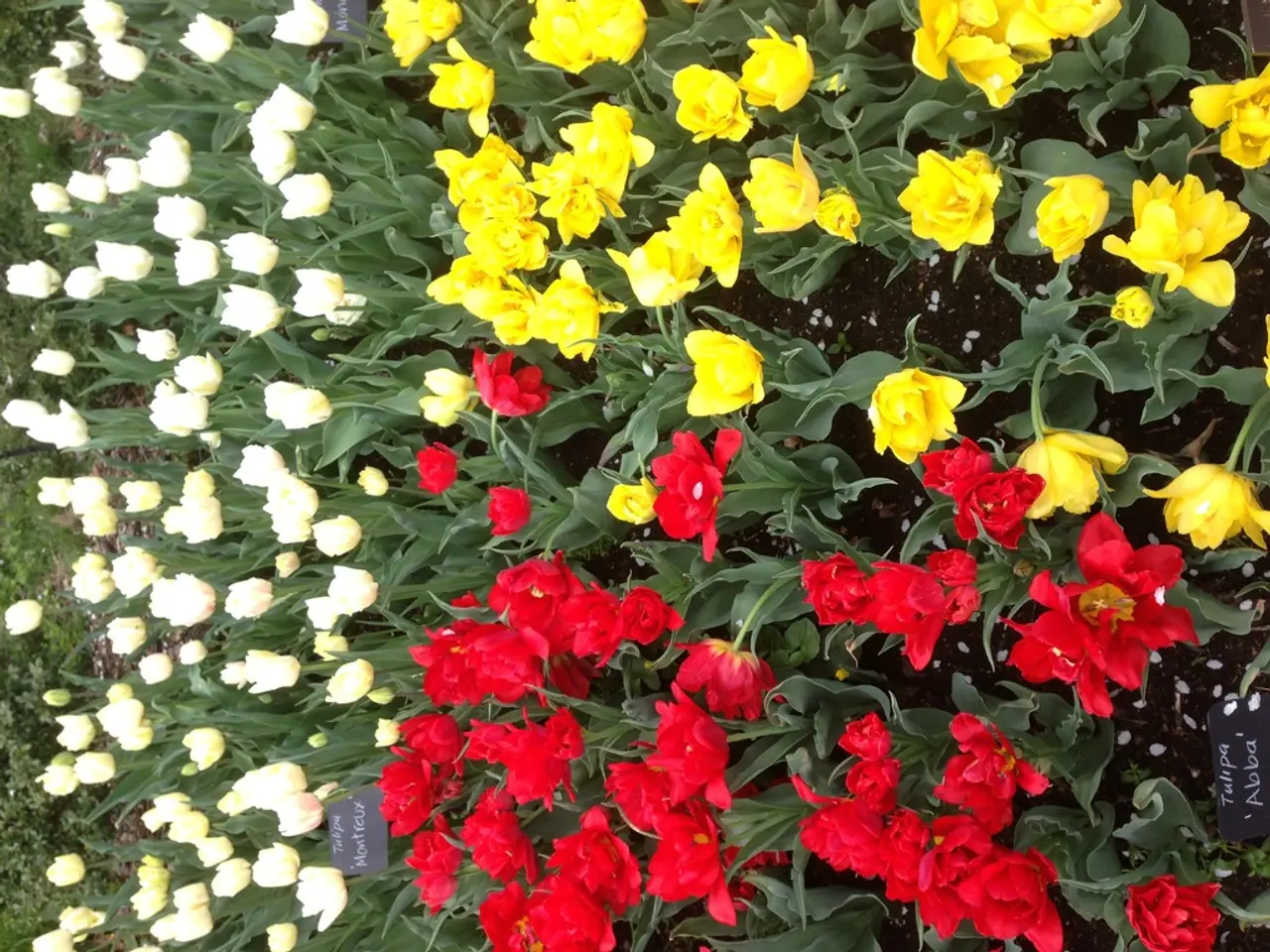Springtime Blossoms: Velvetting Your Lawn with Spectacular Hues
Spring is here, and with it comes numerous planting opportunities for a vibrant and colourful garden. Here are some recommended plant combinations that will bring life to your garden, suitable for various lighting and soil conditions.
Shady Spots
For a shady, textured bed that blooms in spring and early summer, consider planting astilbe and hosta. These plants tolerate shade, provide contrasting foliage, and airy flower plumes, making them a classic shade combination with overlapping bloom times.
If you're after a cool, soft palette, astilbe (pink/white) paired with hosta (variegated foliage) and brunnera (blue flowers) will create a serene and calming atmosphere.
Full Sun or Partial Shade
For a mixed border that bridges the gap from spring to summer, try the combination of cow parsley, Anthriscus sylvestris 'Ravenswing', Verbascum 'Petra', and Carex comans 'Bronze Form'. This combination offers warm tones and is suitable for full sun or partial shade.
Bees and Pollinators
To attract bees and other pollinators, consider planting bee balm (Monarda), liatris, and coreopsis. The bright colours and nectar-rich flowers of these plants will provide a haven for pollinators throughout the season.
For a burst of colour, pair bee balm (red/pink) with liatris (purple) and coreopsis (yellow). This combination will create a vibrant and eye-catching display that will attract bees and hummingbirds.
Long-Blooming Combinations
For a long-blooming display that is pollinator-friendly, try the combination of betony (Betonica), salvia, and nepeta (catmint). These plants produce nectar-rich spikes that bumblebees and other bees favour, and nepeta extends bloom time while being drought-tolerant and pollinator-friendly.
Early Spring Colour
Planting spring bulbs in autumn is recommended for future blooms. Tulips and alliums, when planted under shade-tolerant perennials like brunnera or pulmonaria, will add early spring colour to shady spots.
Mixed Borders
For a cottage garden border, consider planting a combination of sweet rocket, white-flowered foxgloves, pink persicarias, and pale blue bearded iris. This cool-toned combination will provide a long season of colour from late spring to early summer.
Small Spaces
It's possible to create vibrant displays in small spaces using pots and containers. Ornamental cherries like 'Spire' produce frothy spring blossom, and combinations like 'Weigela' 'Bristol Ruby' and Dryopteris cristata can provide an elegant late-spring show.
Signing Up
Signing up for the newsletter allows you to receive gardening advice and inspiration, as well as tips for creating the perfect plant combinations for your garden. The site's terms and conditions and privacy policy apply when entering details.
Planting and Design Tips
- Group plants in drifts of odd numbers (3–7) for visual impact and better foraging for bees.
- Match soil and moisture: astilbe likes moist, rich soil, while coreopsis and liatris prefer drier, well-drained sites—don't mix those without creating separate microzones or soil amendments.
- Provide continuous bloom: choose combinations with staggered peak flowering to supply nectar from early spring (bulbs, betony) through summer (bee balm, liatris) into fall (asters, goldenrod if you want autumn interest).
- Include native species where possible—RHS and other evidence-based lists show natives often support more pollinators and are good choices for pollinator planting.
Punchy Spring Displays
A combination of forget-me-nots and tulips 'Roi du Midi' and 'Carmargue' creates a punchy spring display, while the combination of snake's head fritillaries, pulmonarias contrasting with pale daffodils is bursting with freshness.
Late Spring Combinations
The burnt orange bearded irises first draw the eye to the late spring combination of bearded irises, salvias, and Astrantia 'Buckland', intermingled with Deschampsia cespitosa. A hornbeam hedge provides a lush green foil for this striking display.
Fiery Displays
For a fiery display, try the combination of apricot-coloured Calendula and royal purple lupins and cerinthe. This combination will create a bold and vibrant display that is sure to catch the eye.
Winter Displays
Heather, hellebore, and reticulate iris are combined in a winter display that continues into spring. This combination will provide a splash of colour during the colder months, making your garden a haven of life and colour even in the winter.
Weigela and Bees
Bees are attracted to the abundant weigela flowers, making it a great addition to any garden. 'Weigela' 'Bristol Ruby' and Dryopteris cristata create an elegant late-spring show that will attract bees and other pollinators.
The Final Touch
Yellow pansies at the front of a display soften the edges, creating a finished and polished look. The fiery blooms of wallflower 'Rysi Copper' are combined with the daffodil Narcissus 'Tête-à-tête' to create a bright, bold display that will add the final touch to your garden.
In the realm of home-and-garden lifestyle, a shady spot could be transformed with a combination of astilbe, hosta, and brunnera, offering a cool, soft palette that creates a serene and calming atmosphere. For a vibrant and eye-catching display that will attract bees and hummingbirds, consider planting bee balm, liatris, and coreopsis in full sun or partial shade.




